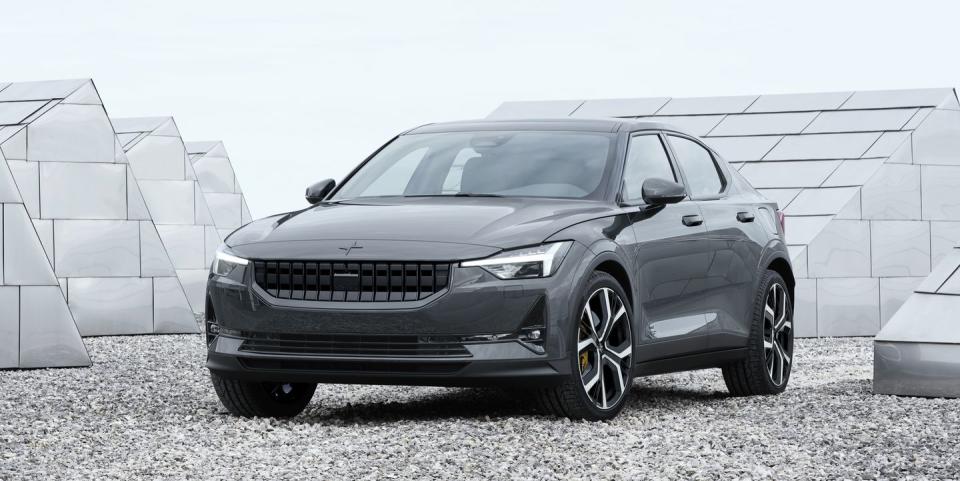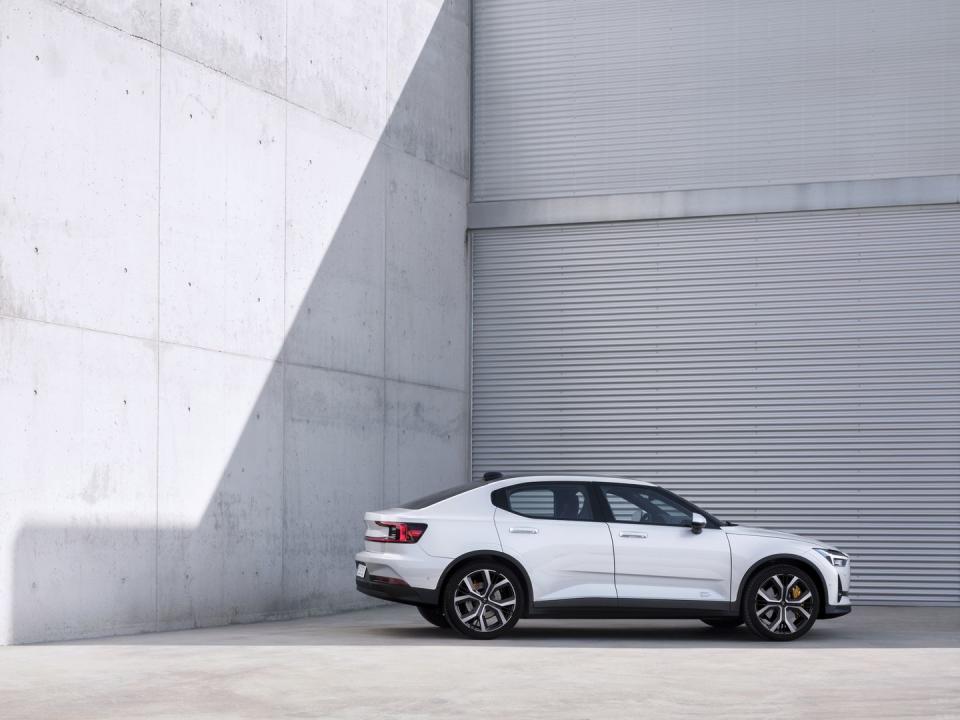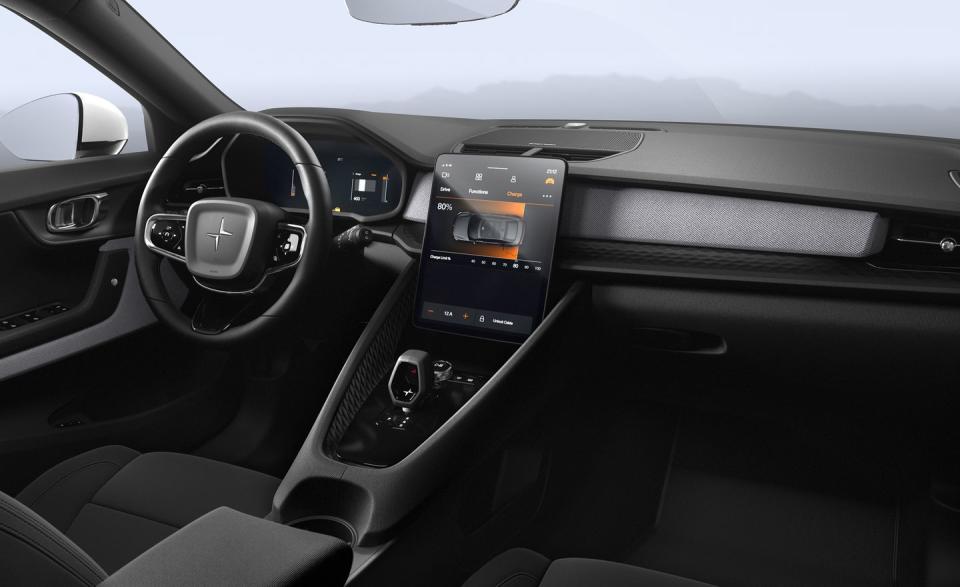An All-Electric Un-SUV from Volvo? Sort of—Meet the Polestar 2

Established automakers are done treating Tesla like a brash arriviste trying to crash a country club. The newcomer's success has turned the legacy brands' irritation into imitation, with the Jaguar I-Pace and the Audi e-tron leading the-ahem-charge. That pair will be followed by an onslaught of EVs from around the industry. Polestar is Volvo's take on a Tesla-style brand, one that will offer a range of electrified cars via direct sales rather than through dealerships. Following the plug-in-hybrid Polestar 1, the 2 is the brand's second offering but its first EV.
An amalgam of SUV and coupe, the Polestar 2 is a hatchback with a fast roofline that gives it unmistakable three-box proportions, but its raised ride height and plastic lower-body cladding suggest today's un-sedans. "It's not a high-standing SUV," says Thomas Ingenlath, Polestar's CEO. "It is lower to the ground, but it has elements of that because, I think, it is really pushing for a modern interpretation of what used to be the sedan category." The location of the battery pack under the floor drives the increase in seat height compared with a typical sedan's, but the 2 is still a very different shape than the slightly smaller Volvo XC40 crossover that sits on the same core architecture.
Like the XC40, the 2 rides on Volvo's mid-size Compact Modular Architecture (CMA), though this electrified version of the platform accommodates a large lithium-ion battery pack beneath the floor. The unit has 27 modules and can store up to 78.0 kilowatt-hours. Polestar hasn't released the battery's final weight yet, or the weight of the car as a whole, but says the pack helps improve chassis rigidity and reduces road noise by four decibels compared with other CMA cars. It is assumed that the electrical system will support fast charging, but there's no word yet on how long a full charge will take.

Power comes from two electric motors, each turning an axle. The motors are identical and each produces 201 horsepower and 243 pound-feet of torque, for a total system output of 402 horsepower and 487 pound-feet. Polestar says the 2 will be capable of a sub-five-second zero-to-60-mph time and is targeting a 275-mile range under the EPA's testing methodology. While respectable, those numbers fall short of the Tesla Model 3 Performance; that car hits 60 mph in 3.5 seconds and has a 310-mile EPA range. Polestar plans to offer an optional Performance package on the 2, which will bring Öhlins dampers, 20-inch forged wheels, and Brembo brakes with gold-colored calipers and matching seatbelts.
Hoping to attract a young, Wi-Fi–seeking demographic, Polestar is trying a new approach to infotainment. The 2 will run Google's Android operating system natively, without access brokered through the Android Auto app. Ingenlath says this will improve both integration and functionality, admitting that tech giants are just better at this kind of thing than auto companies. "Let's stop the bullshit. We acknowledge that we will always run behind, so we should simply use what is the best system and put it into our car," he says. The Android system will include Google Maps navigation and respond to voice commands.
What's more, Polestar will offer a feature whereby an owner's smartphone can function as the key, unlocking and starting the vehicle. The 2 will sense an approved user's approach and adjust seats, mirrors, and climate settings to the driver's preference.

Don't expect sumptuous hides to join the fancy tech in the 2. Polestar is following the growing trend of "vegan" interiors, those without leather or any other material that once had a mother. The 2 shares some conventional switchgear with Volvo models, but most functions will be handled by the 11.0-inch portrait-oriented touchscreen. The 2's steering wheel and shifter carry the brand's as yet unfamiliar stylized star, which also adorns the outside of the car, so buyers should expect some perplexed stares from onlookers. Ingenlath says the interior is meant to be "much more edgy and much more exclusive" than a Volvo's.
The Polestar 2 will be produced in China-home of Geely, which owns both Polestar and Volvo-and will go on sale in the United States in the summer of 2020. The launch edition should cost around $63,000. The $7500 federal EV tax credit will drop the price to $55,500 before any additional state credit is applied. Polestar will also offer what it describes as low-commitment subscription options, with Volvo shops carrying out service functions. But it won't have a conventional dealership network. Like Tesla, the idea is to use "brand experience" centers and sell vehicles directly to customers. Of course, Polestar could run afoul of state franchise laws that protect car dealers, but unlike Tesla, it has Volvo's dealer network to fall back on if things go sideways.
('You Might Also Like',)

 Yahoo Autos
Yahoo Autos 